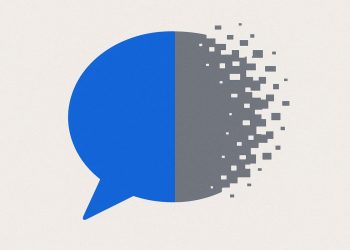Enterprises should scale AI agents in three steps by 2025: First, they use workflow agents to automate single, simple tasks. Next, they create specialized agents to handle several related jobs in one area, saving more time and money. Finally, they build general-purpose agents that can manage big, complex tasks across different domains. Companies that follow this step-by-step path become much more productive and avoid common failures. This careful approach lets them grow their AI power safely and quickly.
What is the recommended roadmap for scaling AI agents in the enterprise by 2025?
To successfully scale AI agents in 2025, enterprises should follow a three-stage roadmap:
1. Workflow agents to automate single processes.
2. Specialized agents for multiple related workflows within a domain.
3. General-purpose agents that manage complex, cross-domain tasks. This staged approach boosts productivity and reduces failure rates.
- From workflow bots to enterprise strategists: a three-stage roadmap for scaling AI agents in 2025*
The global AI agent market is on a tear. Analysts expect it to leap from $7.63 billion in 2025 to $50.31 billion by 2030, a compound annual growth rate of 45.8 % (source).
Yet the same reports warn that most early projects stall: companies race to build general-purpose agents without first mastering simpler forms. The teams that succeed follow an incremental three-stage pattern validated by Google, Anthropic and enterprise adopters this year.
Stage 1: Workflow agents – automate one process at a time
Goal
Pinpoint a single, high-volume business process with clear inputs and outputs (e.g., invoice matching, support ticket triage).
Key facts
– 60 % of companies are expected to have some form of workflow agent in production by the end of 2025 (source).
– Typical build time with modern low-code frameworks (LangChain, Google ADK) is 2-6 weeks.
Design checklist
| Check | Reason | Tool example |
|—|—|—|
| ✅ Single API or database connection | Limits blast radius | SQL connector in LangChain |
| ✅ Deterministic fallback | Keeps humans in loop | Rule engine for low-confidence answers |
| ✅ Metrics dashboard | Proves ROI before scaling | Grafana via OpenTelemetry exporter |
Stage 2: Specialized agents – embed domain expertise
Goal
Expand from one workflow to multiple related workflows inside a single domain (e.g., an HR agent that handles onboarding, offboarding and payroll queries).
Key facts
– Requires 3-5× the context length of a workflow agent, so cost monitoring becomes critical; recent Google research shows token spend can double every new domain added (source).
– Hybrid retrieval (classic RAG + fine-tuned embeddings) cuts hallucinations by up to 40 %.
Architecture sketch
1. Shared long-term memory service (vector DB + graph).
2. Agentic RAG router decides which sub-tool to call.
3. Guardrail layer checks policy compliance before executing external APIs.
Stage 3: General-purpose agents – the enterprise strategist
Goal
Create cross-domain agents that can reason over open-ended tasks (e.g., “analyse Q3 sales and draft board slides”).
Key facts
– Less than 5 % of current enterprise pilots reach this stage; most fail on data governance (source).
– Requires orchestration of multi-agent teams (analyst agent + designer agent + reviewer agent). Google’s ADK and Microsoft’s Azure AI Foundry both now ship pre-built team templates.
Seven-layer reference stack (used by Honeywell & others)
| Layer | Responsibility | Example tech |
|—|—|—|
| Experience | Chat, voice, email interfaces | React + WebRTC |
| Discovery | Decide if agent should act | Policy engine |
| Reasoning | Plan tasks | LLM planner |
| Action | Execute tools | MCP/A2A protocols |
| Data | Pull live data | APIs, RAG |
| Orchestration | Multi-agent handshake | ADK, AutoGen |
| Integration | Connect to ERP/CRM | Workday, Salesforce |
Cost guardrails across all stages
- Token budget alerts at 80 % threshold prevent runaway spend.
- Shared prompt cache (Redis) reduces LLM calls by 25-35 % for repetitive tasks (source).
- Human-in-the-loop checkpoints (audit log + approval UI) satisfy compliance without killing velocity.
Takeaway timeline
| Phase | Typical duration | Success metric |
|---|---|---|
| Workflow agent | 6-8 weeks | ≥ 90 % task accuracy |
| Specialized agent | 3-6 months | 20 % cost reduction vs manual |
| General-purpose pilot | 9-12 months | ≥ 2 new revenue use cases / quarter |
Companies that follow this staged path report 85 % higher productivity and half the failure rate of peers that jump straight to general agents (source).
FAQ: Scaling AI Agents in 2025 – Your Enterprise Roadmap Questions Answered
Below are the five questions we hear most often when teams plan their 2025 rollout. All answers are drawn directly from our article and the latest market data.
What is the safest way to start deploying AI agents in a large enterprise?
Begin with narrow workflow-specific agents that have clear inputs and outputs. Companies that started this way in 2024 report an 85 % productivity gain while limiting risk to a single process. Only after these agents prove stable should you expand to broader domain expertise.
How fast is the AI agent market growing, and why does it matter for budget planning?
The global AI agent market is jumping from $7.63 billion in 2025 to $50.31 billion by 2030, a 45.8 % CAGR. Budget owners should secure 2025 pilot funds now, because talent and cloud credits are already tightening across major vendors.
Which frameworks are actually ready for production use this year?
Google ADK, LangChain, and AutoGen are the top three frameworks in production today. Google’s ADK – released in May 2025 – already powers Google Agentspace and has 50+ enterprise partners (Salesforce, SAP, Workday). Choose the one whose ecosystem best matches your stack; all three now support both A2A (agent-to-agent) and MCP (model-context-protocol) standards.
What guardrails stop agents from making costly mistakes?
Deploy human-in-the-loop checkpoints at every high-impact decision. Best-practice teams set confidence thresholds (e.g., flag anything below 80 %) and use policy engines instead of hard-coded rules. This hybrid approach reduces error rates by up to 40 % without slowing typical workflows.
When should we even think about general-purpose agents?
Only after specialized domain agents are running reliably. The article warns that general-purpose agents are orders of magnitude more complex; no Fortune 500 has yet moved past stage-two specialized agents in production. Treat stage three as a 2027–28 horizon project, not a 2025 goal.



















